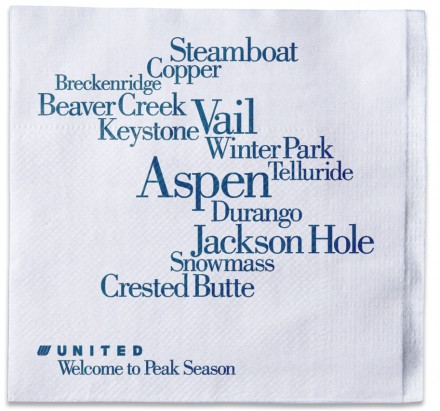In the beginning: Melissa Jun

“In the Beginning” is an ongoing series dedicated to providing snapshots of how various designers were inspired to enter the creative industry. Melissa Jun is a Brooklyn-based freelance graphic designer.
1. What was your earliest design inspiration/impression?
When I was in college, I serendipitously met a designer by the name of Jan Gaunder. She was the art director for a magazine called Jacksonville Woman, and she took the time to show me what she did to make that happen. She gave me my first job out of college and I basically will always owe her, forever.
2. What was the first project you worked on as a professional designer?
It was a bus billboard. But after art school, it was a cocktail napkin for United Airlines, promoting cities for ski season.
3. What is the most memorable/meaningful project you’ve worked on to date?
When I was a design student, we had an assignment in my Type II class to combine the lyrics of a song with a news headline to create a poster. I combined a headline that appeared in Berlin in 1938 that read, “To Rid Berlin of Every Jew.” I made the word “Jew” really big and filled it with the lyrics to a Depeche Mode song called “Clean.” The article began by saying “’Cleansing’ Berlin of its 140,000 Jews seemed more clearly than ever tonight to be the ultimate aim of continuing anti-Semitic moves…” I thought a lot about the word “cleanse” and its context. The juxtaposition with the song lyrics was disturbing, but effective. At the end of the quarter, my poster was hung in the school’s hallway, with other work that was recognized as being the best work of the quarter.
Later, a photography student took offense to my poster and threatened that he would drop out of school unless it was removed. The president of our school organized a meeting for us, but it soon became clear that it didn’t matter what my intentions were: The photography student could not look past his visceral reaction to the poster. We ended up agreeing that I would add a statement to the poster (not unlike a museum card) that would clarify the poster’s intent. It was then that I realized that the things I design have consequences and the power to generate interpretations and reactions, even in the confines of the school hallway.